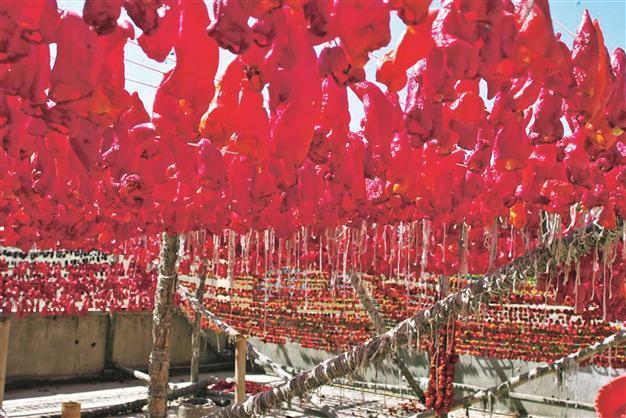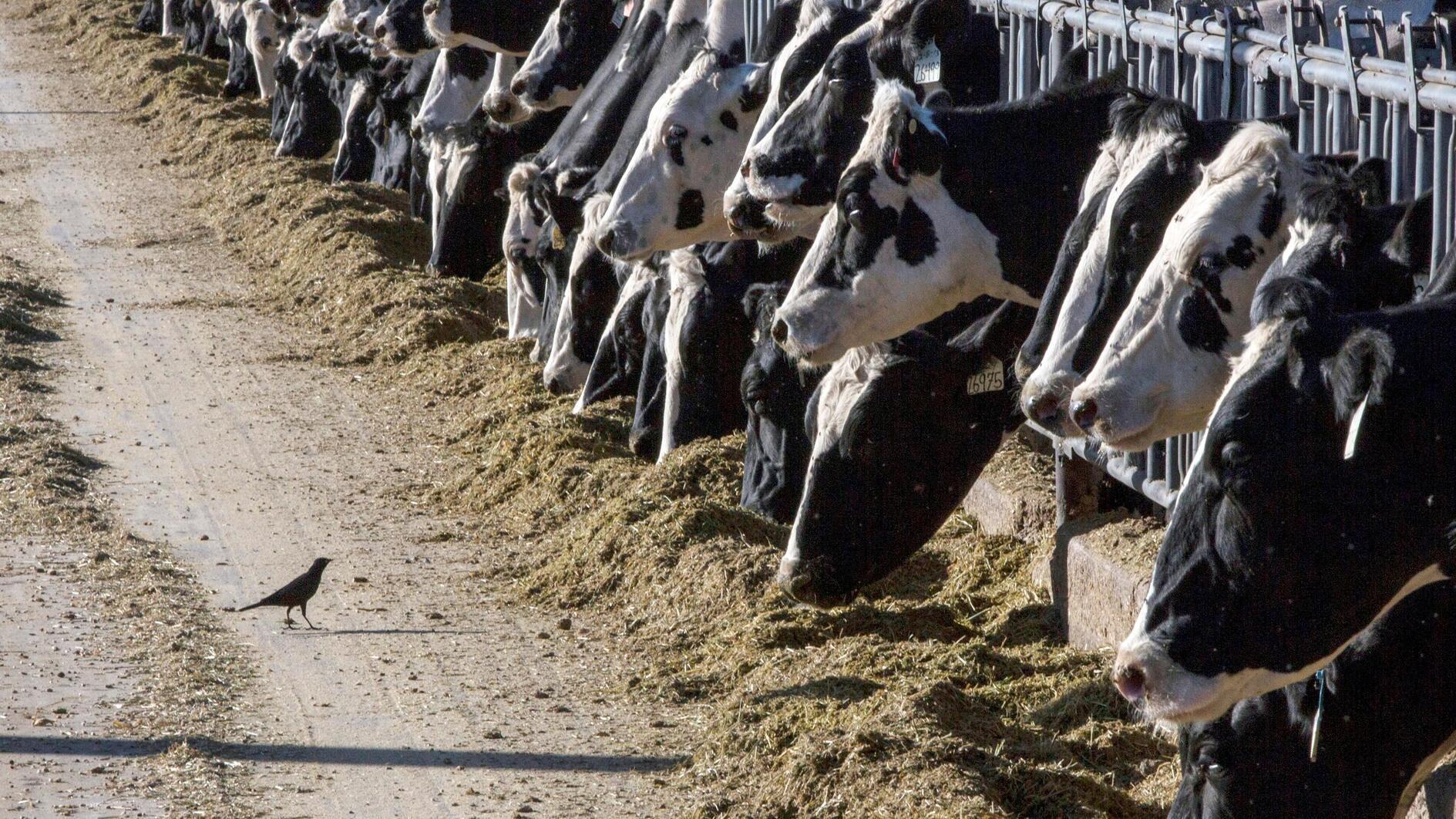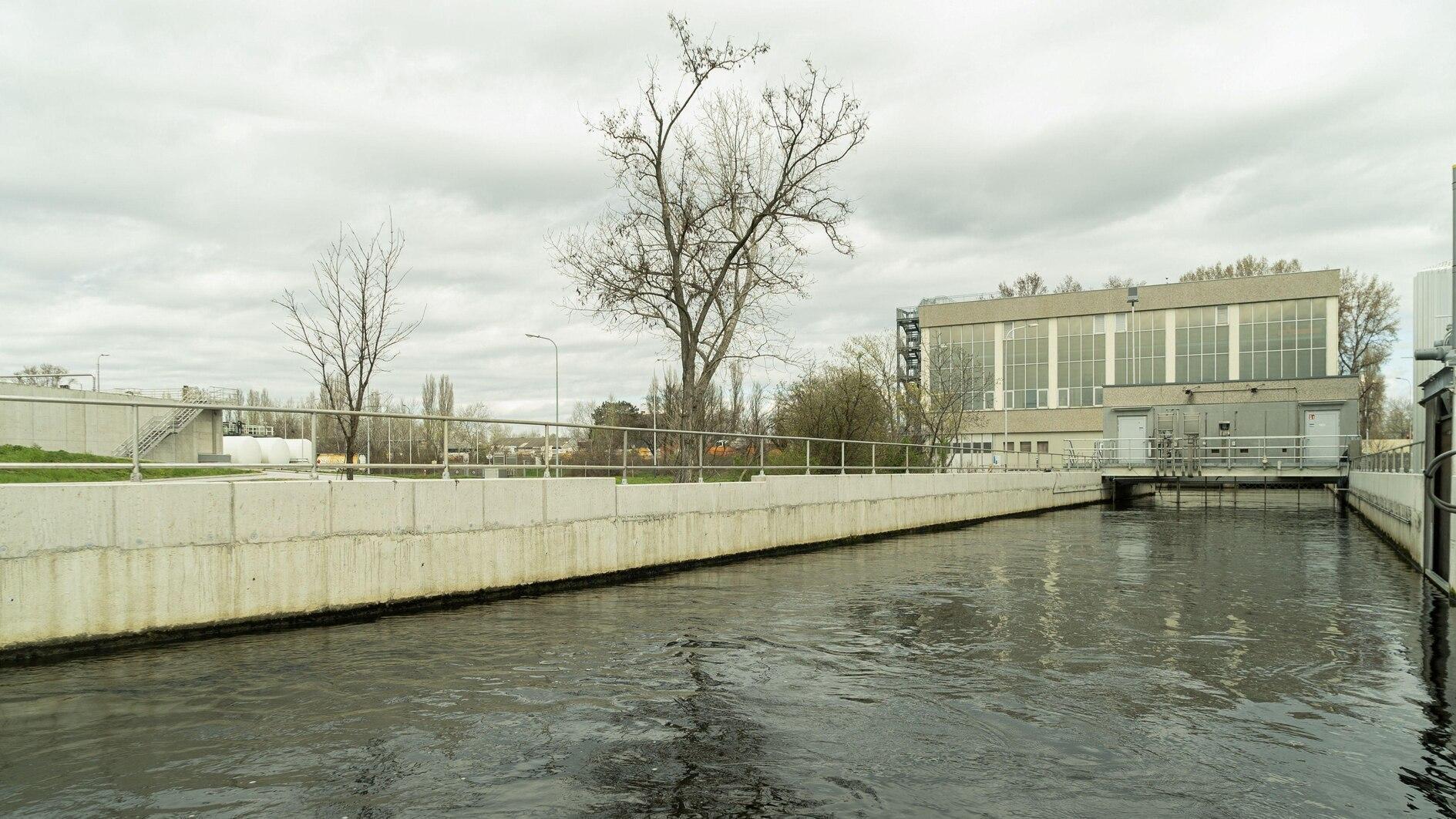Bone-dry freshness: Dried vegetables
AYLİN ÖNEY TAN

Dried vegetables hang in necklace-like strings tied together in bunches.
Since mid-August, southeast Turkey has been painted blood-red. All the roofs of houses, courtyards, gardens, orchards and country-side slopes are all crimson as if they’ve been set on fire. Don’t panic! I’m not talking about war or terrorism. It is just red peppers drying… and lots of other vegetables.Bright coral red peppers, deep-purple eggplants, ivory-bottle gourds, poison-green-striped snake cucumbers, strings of baby okras.. All are dried as winter provisions in early fall. Dried vegetables hanging in necklace-like strings tied together in bunches make a colorful display in markets every September. One of the most striking scenes is in Elmacı Pazarı in Gaziantep, where no other city puts on such a show of winter preparations. The vegetable drying season is on in full speed around the environs of cities like Gaziantep and Şanlıurfa, the epicenter of vegetable drying.
Turkish cuisine has a special fondness for dried vegetables. No other cuisine makes such extensive use of vegetables in their dehydrated form. There is something oxymoronic about the cult of dried vegetables.
Vegetables are synonymous with freshness. The word fresh is something magical. Health and life seems to flow from the word itself. It is the crunchy, succulent, juicy quality of vegetables that make them icons of healthy
eating. As water is the source of both life and health, freshness means being full of life. But when it comes to drying, the freshness is all gone, transforming the iconic health food into a wrinkly, leathery and sometimes a bone-dry substance, far from carrying the signs of life.
A vegetable is considered fresh only when it still retains its water. We call a vegetable fresh when its connection with life is actually just severed, when they have been recently picked from their branches. Once picked, time mercilessly flows to erode the freshness of a vegetable, making it slowly “go bad.” When this lifeline with the soil
is cut, decay is imminent. The water going to the vegetable is stopped from the source; life ends and the process of disintegration speeds up. Yet precisely at this hour of death, there is a secret way to a second life: drying vegetables. In the Turkish kitchen, a dried vegetable is not dead yet, drying is the start of a second life.
Anatolia has been home to one of the oldest and most diverse traditions of drying vegetables. Anatolian people, living in a land that is the cradle of civilization. The tradition may have started from necessity to keep vegetables for long winters, but now it is more of a preference because of the intensified flavor and distinctive texture that can only be achieved by the drying process.
The range of vegetables that are dried is simply amazing. All across Anatolia, peppers, eggplants, zucchinis, marrows, courgettes are hollowed out and dried for stuffed dishes. Stripes of squash, chopped green beans, halved tomatoes, stringed baby okras, husked corns are dried and later reconstituted to be turned into soups, casseroles, stews, etc. Regional tastes include dried wild greens such as melokhia, knotweed, mallow, nettle, and the most amazing of all, dried wild purslane.
Drying food stuffs is a necessity that has evolved into a social ritual. The drying process requires quickly preparing huge mounds of vegetables; it is a race against the decaying process. The perfect time for drying usually falls in between the last week of July through first week of September, as this is when fresh vegetables are ample and the conditions are most suitable. The old Ottoman calendar used to signify certain dates with relevant winds and heat waves. The perfect time for drying -- when the weather is hot and dry -- has a name of its own, eyyam-ı buhur, which is considered the hottest period of the year, falling between Aug. 2 and 9. Nowadays, with global warming, the precise weather calendar of the old times seems to be changing. But no one is holding back, even if there are early rainfalls, and shorter summers. Even the not-so-sunny damp Black Sea region is keen on drying their favorite vegetables. Drying green beans and corn-on-the-cob is a common practice throughout the inner and coastal parts of northern Turkey. Dried green beans have a particular smoky flavor that goes well with eggs and when sautéed with onions and scrambled with eggs, it is the best breakfast ever for true Black Sea folks.
Drying is one of the oldest and easiest methods of preserving food. Like many things traditional, drying vegetables is an example of human ingenuity, they are both healthy as well as ecologically friendly. Dried vegetables do not contain any chemical additives of processed foods, and drying allows us to enjoy them longer without consuming the energy required for refrigeration or freezing. In this age when we are ever more conscious of what we choose to eat, drying vegetables is a tradition definitely worth saving and savoring.
Bite of the Week
Fork of the Week: Chef Civan Er makes the most amazing innovative dumplings from dried eggplants in his new restaurant. His cuisine is “new,” yet traditional. He manages to pull out completely new dishes inspired from classic Turkish recipes, making use of traditional local ingredients, interpreted in an imaginative way. Strangely, the result is a totally new flavor, not falling far from the original traditional taste. This is quite hard to achieve, to create an exciting dish, without messing up with the long-loved classics. Try his dried-eggplant-stuffed “mantı” dumplings with Antioch yogurt sauce, at Yeni Lokanta, meaning simply the new restaurant, is just off İstiklal Caddesi, close to Tünel, between the Richmond Hotel and Lebon Patisserie, at Kumbaracı Yokuşu, No. 66.
Cork of the Week: Civan says people love a glass of Suvla Kınalı Yapıncak, with this stuffed dumplings. Though pairing wine with yogurt is tricky, this yogurt sauce with dried red peppers is an exception and the lovely white of Suvla from Gallipoli glows besides this dish. Kınalı Yapıncak is an indigenous white grape speckled with pinkish streaks, so in my mind, I somehow liken them with the mottled dried peppers and salmon pink secret sauce Civan has created.












